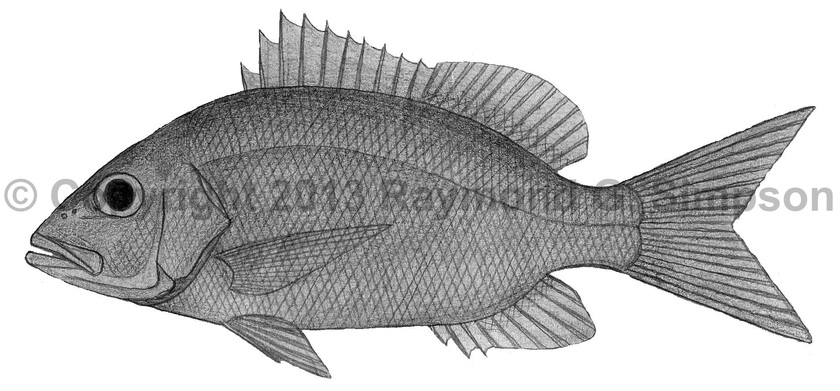
Common Name
Caribbean Red Snapper
Year Described
Poey, 1866
Identification
Dorsal Fin: X, 14
Anal Fin: III, 8-9 (usually 8)
Pectoral Fin: 17
Gill Rakers:
Lateral Line Scales: 49-52
Body relatively deep and moderately compressed. Upper and lower jaws with a row of conical teeth. Anterior upper jaw teeth enlarged. Vomerine teeth in a anchor-shaped patch with a median extension. Palatine teeth an elongate band. Ectopterygoid teeth absent. Soft dorsal and anal fins with scales on membranes. Maxilla scaleless. Scales above lateral line 9-11, scales below lateral line 16-19, and sum of scales on, above, and below lateral line totals 77-81. No distinct notch between spiny and soft dorsal fins. Last dorsal ray not elongated. Soft dorsal fin pointed. Anal fin angular and pointed. Caudal fin lunate or emarginate.
Color
Body bright red to rosy grading to whitish below. Eye red. A faint dark blotch on the lateral line under the soft dorsal fin (fades in larger fish). Occasionally with a small dark spot at pectoral fin base. Fins dark red to rosy.
Size
Maximum size to 100cm TL. Commonly to 65cm TL.
Habitat
Deeper continental shelf waters from 30-160m over hard bottom habitats.
Range
Caribbean Sea from Cuba and the Yucatan Peninsula to NE Brazil. Recorded from off the U.S. coast, but these records appear to be the similar Northern Red Snapper.
References
Anderson, W.D. 2002. Lutjanidae (pp. 1479-1504). In: Carpenter. 2002. The living marine resources of the Western Central Atlantic. Vol. 3: Bony fishes part 2 (Opistognathidae to Molidae). FAO Species Identification Guides for Fisheries Purposes. American Society of Ichthyologists and Herpetologists Special Publication No. 5. FAO of the U.N., Rome.
Other Notes
This species is very similar to L. campechanus and records from U.S. waters are probably that species.